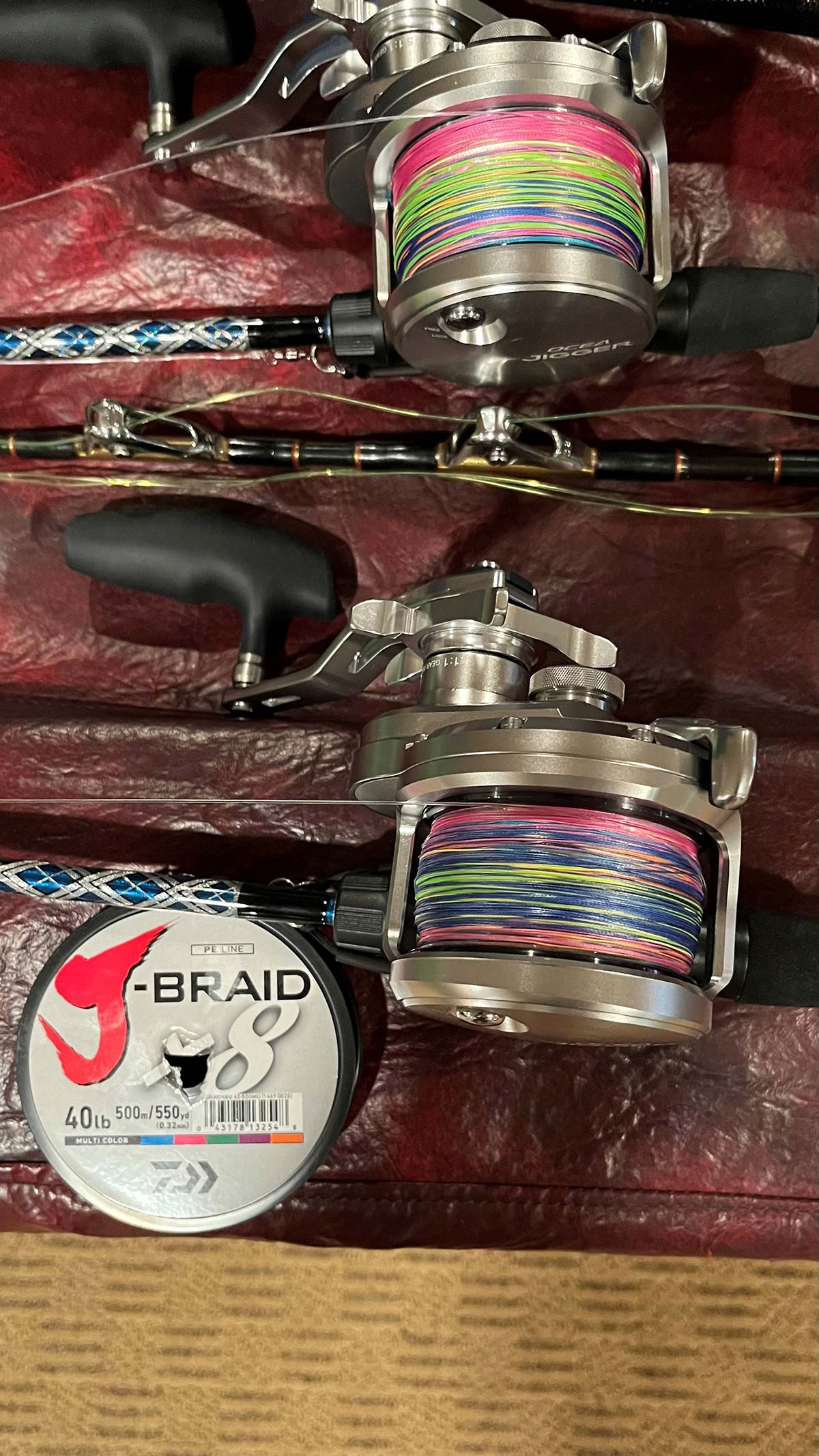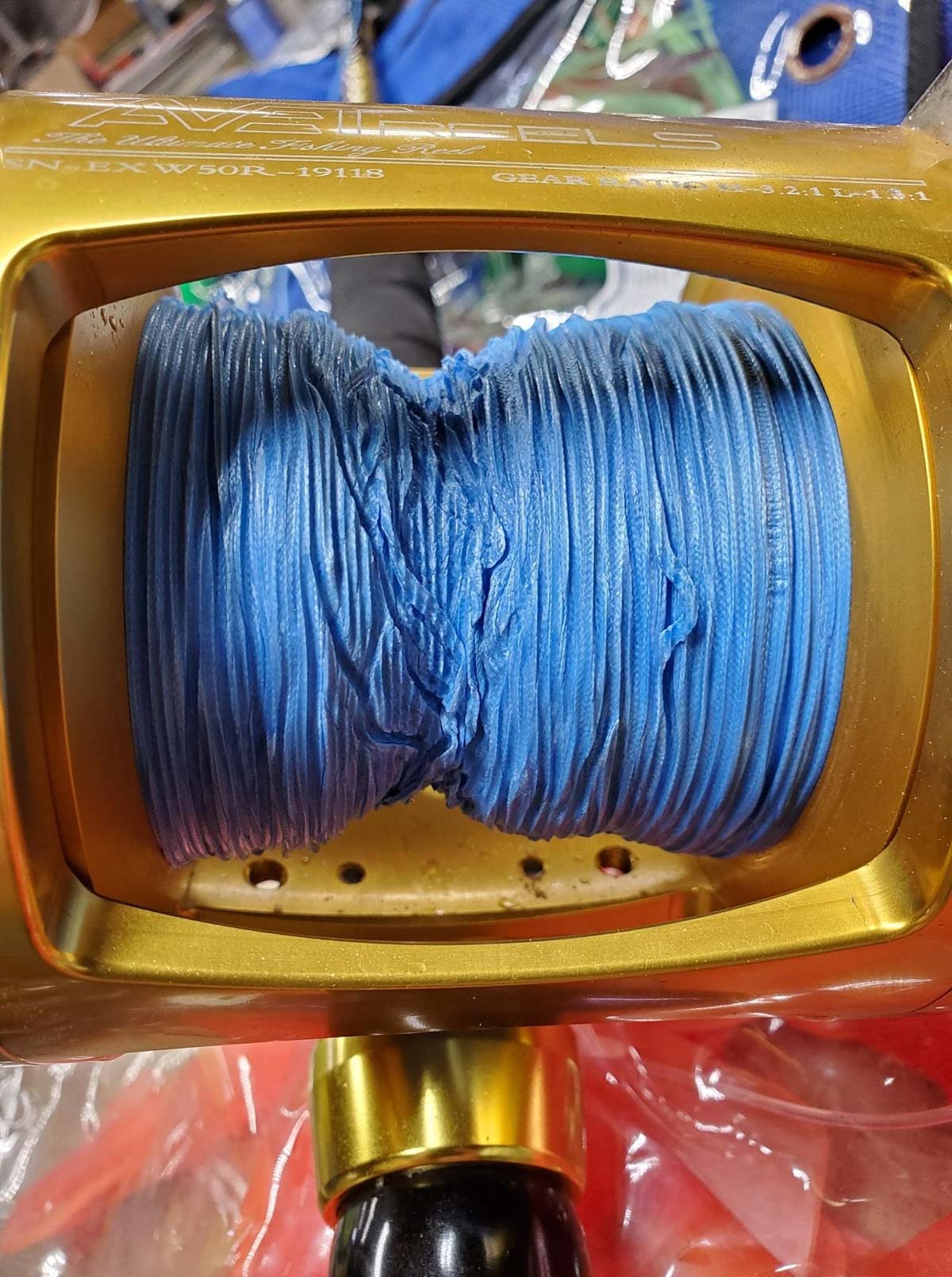
Going lighter affords an angler more opportunities and increased excitement.
Lighter gear and lines have been made possible with recent advancements in materials and manufacturing processes. This has led to lighter stronger gear. Advancements in line material and reel components have allowed smaller and lighter equipment to be used on larger fish. Reel stopping power (drag) and heat disbursement allow for smaller reels to be used where the 30s and 50s once dominated. This is tremendous for the “jig and pop” fishery. Any technique that requires the angler to hold and work a rod requires lightweight tackle.
Thin braided line has a higher breaking strength than stated by most manufacturers with diameter that’s two to three times thinner than monofilament, increasing the line capacity of smaller reels. The thinner line has less drag in the water and which will prevent the line from scoping out in the current, allowing everything else – sinkers, jigs, terminal tackle – to become lighter. When fishing live bait the reduced line drag keeps them hardly longer. The only drawback is when fishing in crowded scenarios like a head boat where tangles become a nightmare.

So what pound test is suitable for your needs this season? Let’s take a look at some common matchups:
10-Pound: Excellent for 3000 or 4000 series spinning reels on light to medium 6-1/2 to 7-foot rods. This is the perfect setup for making bait (jigging mackerel, squid, etc.) and also double as “pot rods” when fishing for mahi, triggerfish, jacks, and small tuna that all seek the shelter of lobster pots and or floating debris.
20- to 40-Pound: Stepping up in line class for 6000 to 8000 series reels is an excellent match for medium-sized tuna. Keeping things light will allow you to cast farther, and jig longer. Tuna in the 30- to 80-pound range can be capably managed on this gear.
40- to 60-Pound: When it comes to targeting yellowfin or bluefin tuna in the 80- to 150-pound-plus class, 40- to 60-pound test is plenty when matched with 10000 to 20000 size reels. When jigging there are many advantages to not going heavier than 40 pounds; lighter line with less drag in the water results in a better presentation, while the angler can stay more vertical to the jig providing better feel for pick-ups, and improved angle to work the jig.
60- to 80-Pound: When it comes to daytime deep dropping and swordfish, 60- to 80-pound braid gives you plenty of breaking strength but dramatically increases a reel’s line capacity. The line capacity and diameter become important when baits need to get down to 1,000 feet or more. Using 30 and 50-class reels has become the norm, replacing the 70s and 80s. This opens up many options for using electric or electric assist reels.
80- to 120-Pound: When it comes to trolling gear, loading up with 80- to 120-pound test is acceptable; for the most part, all of this line is either out of the water or not visible as you troll and has no implications on a trolled lure’s action. So why not beef it up a little? This line is still incredibly thin, and 30 and 50-class reels can hold more than you will ever need. Using top shots here is a must. The top shot can be a little heavier than the running line and offer shock absorption on strike as well as break-off protection. When trolling, the goal is to achieve multiple hookups, which can and will result in crossed lines. Braid on braid with a little drag is an immediate break-off; mono is a great deal more forgiving. Using a top shoot gives you a chance to lighten up the drags and figure the tangle out.
Braid is more expensive than mono, but in the long run, you will save both time and money. Mono needs to be replaced annually and sometimes more often depending on use, where braided lines can last for years. Just change out the leader and or top shots. A pro trick for extending the life of the fishing line is to flip it. Odds are the bottom half of the spool has never seen the light of day or been wet. Inverting the line so the fresh part is now on top will extend its life and give you a few more seasons.



